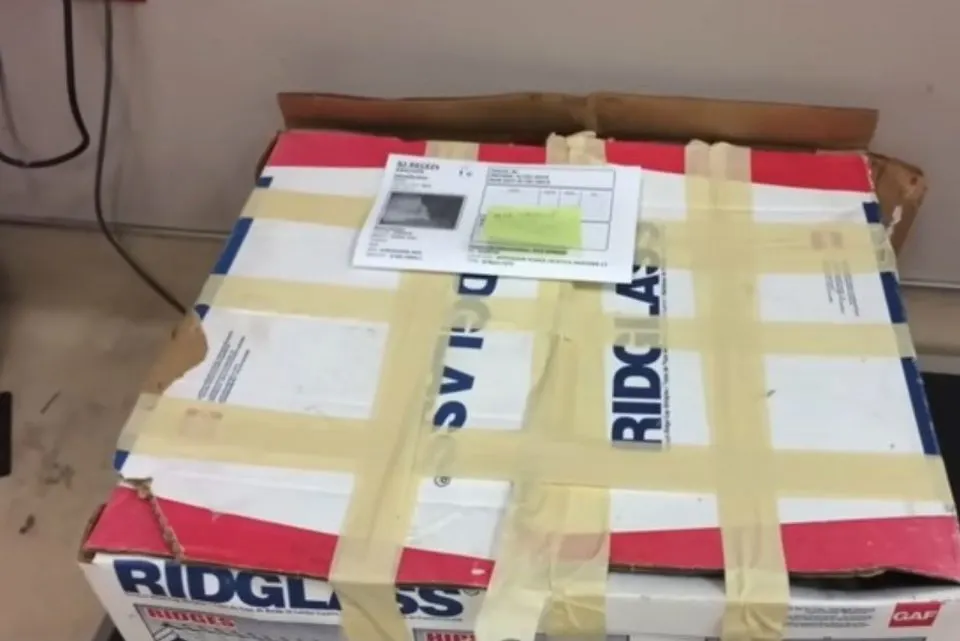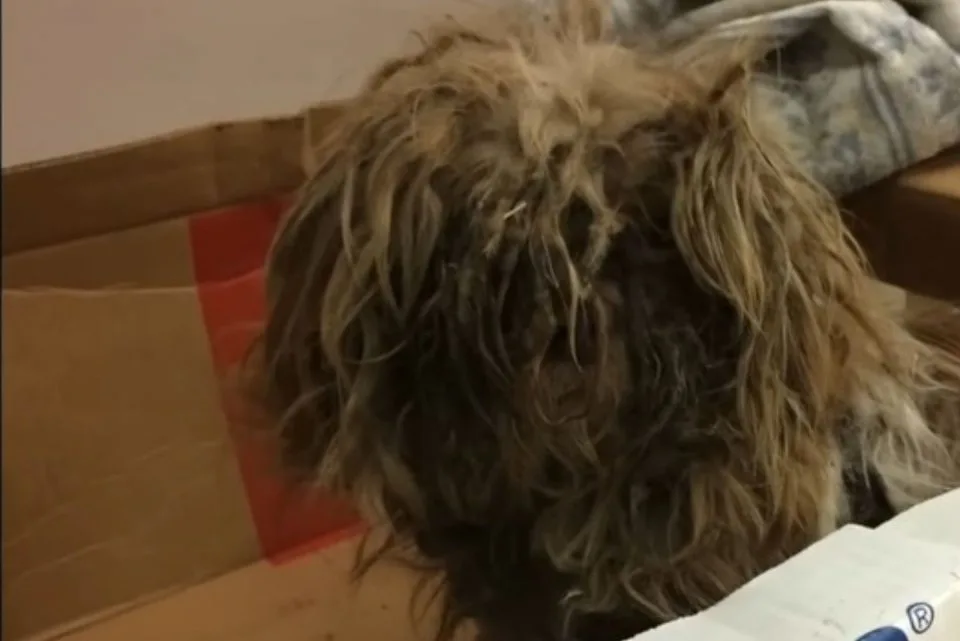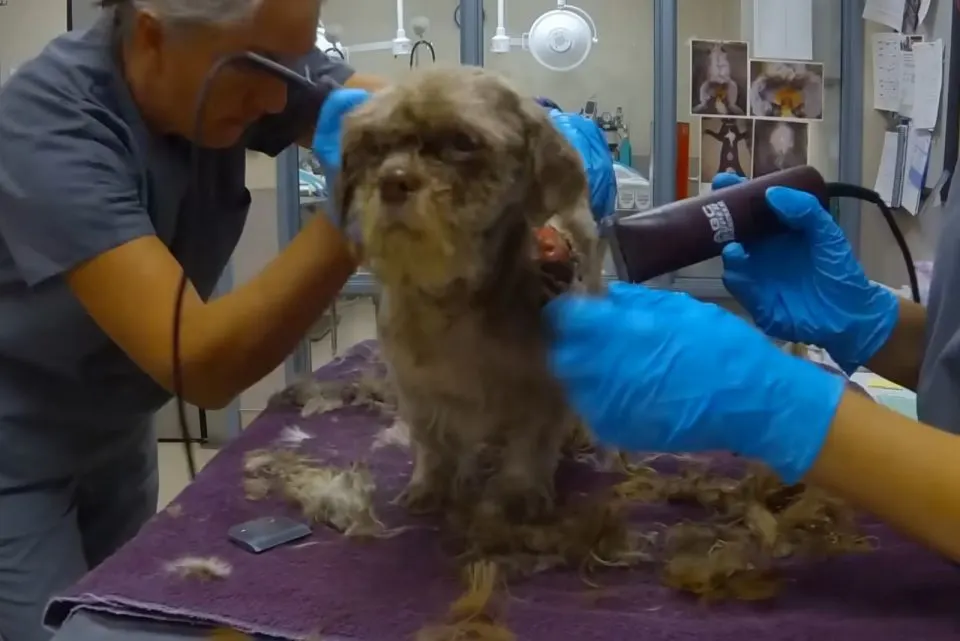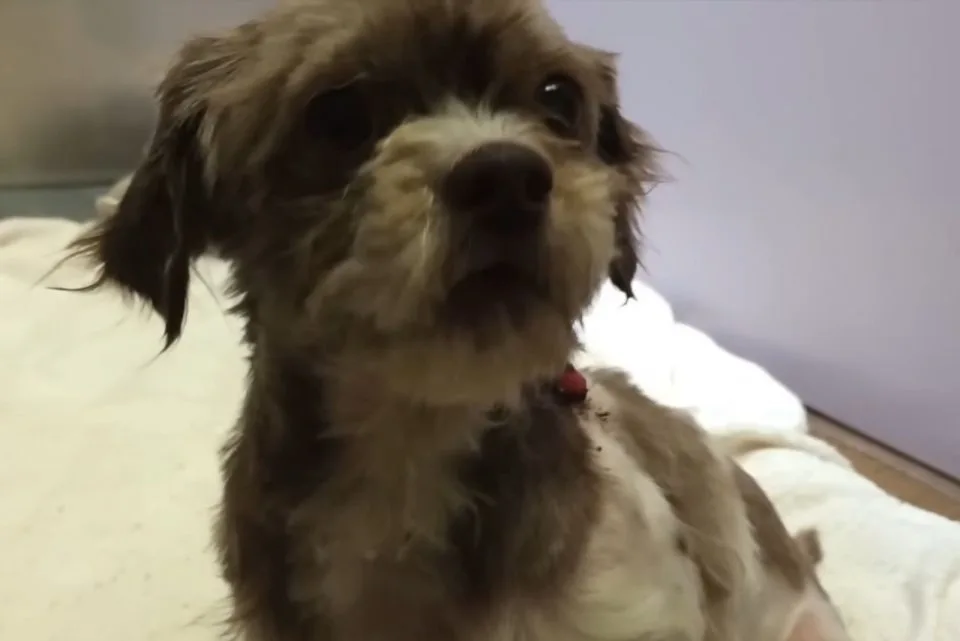No one really wants to open Pandora’s box.
We all know that something terrible might come out of it.
The mysterious box that has been following humanity for ages arrived in San Jose.
The staff of the San Jose Animal Shelter knew that once they opened the box, everything would change.
But, they couldn’t leave it unopened either. The terrible stench that was coming out of it told them they had to react within seconds!
What came out of the box?
What Was Inside Pandora’s Box?

Back in April of 2015, a mysterious box arrived at San Jose’s Animal Care Center. It was all taped up, as if it’s trying to stop whatever was inside from escaping.
What could it be?
The person who brought in the box said it contained…
An injured puppy!

A puppy in the box, with almost no fresh air to breathe?
The reaction of the staff had to be prompt.
The terrible smell that was coming from the box made them react even faster.
Sure enough, it was a dog… a matted and injured one. Her poor soul was aching for help.
The scruffy puppy had a terrible wound on her shoulder, and the shelter workers assumed the odour was coming from it. But, they couldn’t get a better look of it unless they shaved down the dog’s coat.
On top of everything, the dog’s coat was too dirty… covered in debris, dirt, and feces, and it simply had to come off.

The poor pup showed no resistance during the grooming process, which took a while. She was pawfectly calm, allowing the hoomans to help her.
The wound they first saw on her shoulder was actually a lump, and the staff knew they had to inspect it quickly.
The sweet pup they named Pandora was super glad they were helping her. The shelter decided to keep her for a few days to see if her owner showed up. They gave her a flea bath and started healing her broken soul.
But, no one came to pick up the pup from the box.
So, the shelter did what they had to do: they continued Pandora’s makeover!
Pandora’s Recovery

Now that she was all clean and tidy, it was time to address that awful mass on Pandora. Everyone was so afraid it was something ominous.
Pandora went under anesthesia and the medical team of San Jose Animal Care Center got busy fixing what was broken.
First, they took some X-ray shots of Pandora’s teeth, figured out which needed to be removed, and then did teeth extraction surgery of several of Pandora’s teeth.
Moving on, while Pandora was still down, they spayed her, repaired the umbilical hernia she had, and removed two masses they found on Pandora’s body. They sent the masses to their lab for inspection.
Everyone was so nervous to hear the results. The staff was really worried about the masses being cancerous tumours.
The results came back partially positive.
The smaller mass was a benign cyst.
However, the bigger mass on the shoulder was a malignant tumour. The good news was that that kind of tumour is slow-spreading and considered cured if removed completely. The vets did an incredible job and removed the entire mass.
No tumour was left in Pandora! She was a cancer-free girl ready to conquer the world!
In just a few short weeks, Pandora was found, cured, and fully recovered.
Next up was the adoption process!
Pandora was officially put up for adoption on May 14th, 2015. She found a furever home three days later with a kind, older man.

They both couldn’t be happier they found each other!
I guess opening Pandora’s box doesn’t always bring terrible things, does it?
If you’ve ever noticed your furry companion constantly licking their paws, you’re not alone. It’s a common behavior that many dog owners observe but might not fully understand. Paw licking in dogs can range from the occasional grooming habit to a persistent behavior that raises concerns. As a seasoned dog enthusiast, you’re likely curious about the reasons behind this seemingly innocent yet intriguing habit.
Your four-legged friend’s paw licking could stem from various factors, some of which might surprise you. From simple grooming routines to potential health issues, the reasons behind this behavior can be as diverse as our canine companions themselves. Understanding the motivations behind why dogs lick their paws can provide valuable insights into their well-being and help strengthen the bond between you and your loyal pet.
Understanding Why Dogs Lick Their Paws
The Basics of Canine Behavior
Dogs are natural groomers. Licking paws is a common grooming behavior in dogs. It helps them keep clean and maintain good hygiene.
When Licking Becomes Excessive
Excessive paw licking could signal an underlying issue. If you notice your dog obsessively licking their paws, it might be due to allergies, pain, anxiety, or skin irritation. It’s essential to monitor this behavior and consult a vet if it persists.
Common Causes of Paw Licking in Dogs
Allergies and Skin Conditions
If your dog is constantly licking their paws, it could be a sign of allergies or skin conditions. Just like humans, dogs can have allergic reactions to various elements in their environment, such as pollen, grass, or certain foods. These allergies can cause itchiness and discomfort, leading to paw licking as a way to soothe the irritation. Skin conditions like eczema or dermatitis can also prompt dogs to lick their paws excessively. If you notice persistent licking, it’s essential to consult a vet to identify and address any underlying allergies or skin issues.
Injuries and Pain
Injuries or pain in your dog’s paws can trigger excessive licking as a response to discomfort. Dogs may lick their paws to alleviate pain from cuts, bruises, or foreign objects lodged in the paw pads. It’s crucial to inspect your dog’s paws regularly for any signs of injuries or sensitivity. If you observe continuous paw licking accompanied by limping or whining, it’s advisable to seek veterinary attention to evaluate and treat any underlying pain or injuries.
Parasites and Infections
Parasites like fleas or ticks can cause significant irritation to a dog’s paws, leading to excessive licking. Additionally, bacterial or yeast infections can develop between the toes or paw pads, resulting in discomfort and the urge to lick the affected areas. Regular grooming and inspection of your dog’s paws can help detect parasites or signs of infections early on. Consult your vet if you notice persistent paw licking, redness, swelling, or a foul odor, as this could indicate a parasitic infestation or an infection that requires treatment.
Psychological Factors Behind Paw Licking
Anxiety and Boredom
When your dog feels anxious or bored, they may resort to licking their paws as a coping mechanism. Just like humans might bite their nails when nervous, dogs may lick their paws excessively in response to stress or when they are not mentally stimulated enough. Finding ways to alleviate your dog’s anxiety or providing them with enough mental and physical enrichment can help reduce this behavior.
Compulsive Behaviors in Dogs
Some dogs develop compulsive behaviors, including excessive paw licking, as a result of various factors such as genetics, upbringing, or past experiences. These behaviors can become a habit that is hard to break. If your dog displays compulsive paw licking that is not related to any physical issues, it’s essential to work with a professional trainer or behaviorist to address the underlying causes and provide appropriate training and management techniques to help your furry friend overcome this habit.
Addressing Paw Licking in Dogs
Veterinary Diagnosis and Treatment
When your dog is constantly licking its paws, it’s essential to consult a veterinarian for a proper diagnosis. The vet can help rule out underlying medical conditions like allergies, skin issues, or pain as the cause of this behavior. They may recommend tests to pinpoint the exact reason for the paw licking. Treatment options could include medications for allergies or pain relief, specialized diets, or topical treatments for skin problems.
Home Care and Prevention Strategies
While professional help is crucial, you can also implement some strategies at home to address your dog’s paw licking habit. Ensure your dog’s environment is enriched with toys, activities, and attention to prevent boredom and anxiety. Regular grooming and checking for any signs of irritation or injury on your dog’s paws can help prevent excessive licking. Additionally, providing a balanced diet and regular exercise can contribute to your dog’s overall well-being and help reduce compulsive behaviors like paw licking.
Conclusion
So, there you have it – the reasons why your furry friend might be constantly licking their paws. From allergies to anxiety, there’s a range of factors at play. Remember, it’s crucial to seek professional advice from your vet to get to the bottom of the issue. By understanding the root cause, you can help your dog lead a happier and healthier life. Don’t hesitate to reach out to your vet for guidance and explore various treatment options. Taking proactive steps, like providing a stimulating environment and ensuring your dog’s overall well-being, can make a real difference. Stay vigilant, stay informed, and most importantly, show your pup some extra love and care.
Frequently Asked Questions
Why do dogs lick their paws?
Dogs may lick their paws due to allergies, pain, anxiety, boredom, or skin issues. It could also be a compulsive behavior stemming from genetics or past experiences. Consulting a vet is essential to determine the underlying cause.
How can I help my dog stop licking its paws?
To help your dog stop licking its paws, seek veterinary advice for proper diagnosis and treatment. This may involve medications, specialized diets, or topical treatments. Additionally, enrich their environment with toys, ensure regular exercise, and maintain a balanced diet for overall well-being.
Is paw licking in dogs a serious issue?
Paw licking in dogs can be a sign of underlying health or behavioral issues. It is crucial to consult a vet for proper diagnosis and treatment. Addressing the root cause can prevent further complications and improve your dog’s well-being.
[no_toc]

Hey there, I’m Janet Brooks, a dog-loving student from California. I’m all about helping pups in need, especially those without homes. Me and my awesome friends work together to give shelter and love to stray dogs. Oh, and I also write blogs about dogs to share helpful info.